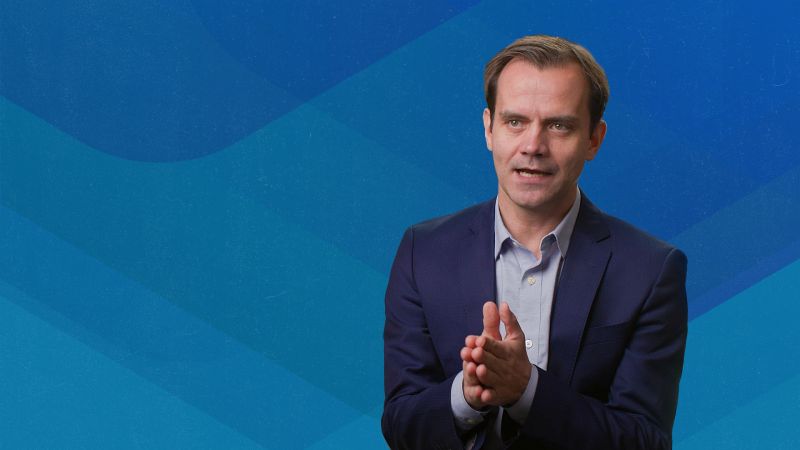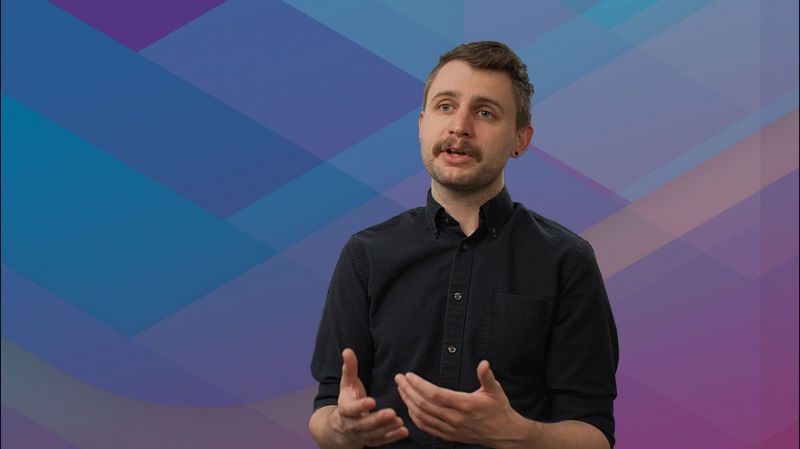What Does It Take to Make Good Decisions?
Leaders often struggle with the hard choices before them. A well-defined process can put them on the right path

After becoming U.S. president in 2009, Barack Obama faced a monumental decision: how to rescue the American banking system from the Great Recession. His process of solving the puzzle was instructive. Listened to the experts? Yes. Studied the data? Yes. Polled his advisers? Yes. Then he went to dinner. Oh, and he got a haircut.
It was all part of his decision-making strategy.
As Obama explained in his essay, “How I Approach the Toughest Decisions”, the act of deciding can be paralyzing. Since no decision is perfect, he followed a process to guide him. “Then, no matter how things turned out, I would at least know I had done my level best with the information in front of me.”
That strategy included stepping away from the pressure to allow decisions to “breathe,” he said. Whether it was a stroll outside the Oval Office or a quick game of pool, he knew that sometimes distancing yourself from a problem can bring clarity.
While few of us face issues with the weight of a presidency, big decisions at work can still have lasting consequences for employees, customers and the future of an organization. The problem? Too often, leaders obsess over the decision (“What if we get this wrong?”) rather than follow a process that leads to better choices. No wonder decision fatigue is now a thing.
But, as Obama discovered, there’s hope in having a decision-making framework. Asking the right questions, defining the issues and identifying who should be involved ensure decisions align with the organization’s goals. This approach not only prevents hasty choices but gives confidence in the final outcome.
To explore how effective decision-making works, we spoke with four business leaders who are Smith School of Business alumni (including one whose job is helping others make decisions). Here’s how they make decisions, and what they learned along the way.
Anchor decisions in your goals
Beginning the decision-making process can feel like standing at a crossroads with no signposts. The key is having a map — your company’s goals and guiding principles. These serve as the foundation for evaluating options and avoiding missteps.
Erik Lockhart, MBA’93, president of Lockhart Facilitation and associate director of the Executive Decision Centre at Smith, has spent three decades helping organizations align their decision-making with their goals.
“When you know your organization’s ultimate aim, decisions can flow from there,” he says. Without that clarity, people often rely on personal biases or moods, which can lead to ineffective choices.
If your company’s goals are well-documented, use them as a starting point. If not, consider it a sign your firm should formalize its strategic priorities. Lockhart recalls working with a municipality aiming to improve affordable housing, only to discover their existing policies gave incentives to developers that didn’t support this goal.
“Decisions become a lot easier when you know what your goals are and how you plan to achieve them,” he says.
Who gets a say?
In today’s collaborative workplaces, it’s easy to believe that more voices equal better decisions. But too many opinions can overwhelm. When major decisions are at stake, it’s essential to determine who should be involved — and who gets the final word.
Candace Shaw, MBA’87, deputy chief investment officer and COO at SLC Management, says her company created an internal decision-making framework that helps clarify this. A key part identifies the ultimate decision-makers. “Sometimes, it’s not always clear in companies who has a say,” she explains.
One person who must be included in the process is whomever is responsible for executing the decision. “They’ll tell you how difficult it’s going to be and the challenges involved,” Shaw says. Involving them from the start also increases buy-in.
Another group to consider? Those directly affected by the decision. For example, when a retail chain rolls out a new merchandising system, involving store managers in the process can flag unforeseen issues. Armed with more intimate store knowledge than head office staff, the managers might also be able to suggest improvements.
Lockhart once consulted with a small church struggling with attendance. A group of young congregants was asked to weigh in. As he recalls: “The kids asked the priest, ‘Do you have a presence on social media? That’s where all our friends are.’ And, of course, the answer was no, which meant the church wasn’t reaching those younger people.”
Find a system that works for you
Leaders today face a constant barrage of decisions. A simple tool to prioritize and clarify choices can be a starting point. One well-known method is the Eisenhower Matrix, which sorts tasks into four categories: urgent/important (do it now); urgent/not important (delegate it); not urgent/important (schedule it); and not urgent/not important (delete it). This can act as a clearinghouse for all the “decision asks” that come your way. After all, not everything needs to be decided right now, or by you or at all. (And yes, there’s even an Eisenhower app for that.)
Connie Lo, BCom’15, GDA’15, co-founder of natural skin-care brand Three Ships, has found success with a different system: the ICE scoring model. ICE evaluates ideas on three criteria: impact, confidence and ease, with each scored from 1 to 10. “Impact” measures how well the idea aligns with objectives; “confidence” assesses how likely it is to succeed; and “ease” gauges the difficulty of implementation.
Lo first encountered ICE in Dan Martell’s book Buy Back Your Time and implemented it at Three Ships. “The ICE model is great because it allows you to rank every project or decision you need to make and helps you to prioritize,” she says.
That’s important in a small but growing company such as Three Ships. Lo co-founded the brand in 2017 and today its products are sold in more than 1,000 North American retail locations, including Whole Foods and Holt Renfrew and online at Well.ca and Amazon.
How does Three Ships use ICE? Lo offers an example: If the company wants to boost wholesale sales, it might consider a sampling program. Lo and her team would evaluate the program using ICE, assessing potential sales impact, confidence in the approach and how easily it could be executed. “It requires our team members to think through their proposals, make those assessments and answer them ahead of time,” she says. “So, it’s worked quite well for us.”
Another tool Lo uses is the 1-3-1 rule: When team members present one problem, they must also bring three potential solutions and recommend one.

Ask questions and trust your team
Imagine making substantial decisions that affect not just the future of your firm but other companies built over generations by hard-working families and entrepreneurs. Brent Belzberg, BCom’72, senior managing partner at TorQuest Partners, one of Canada’s leading private equity firms, faces this challenge regularly.
TorQuest invests in privately held Canadian middle-market companies — think industrial manufacturers, food distributors, architectural firms, extrusion businesses and the like. The goal is to grow these firms while providing a succession plan for their entrepreneur-owners.
TorQuest’s process for such acquisitions involves multiple stages: initial screening, detailed analysis, internal discussion and external consultation. Final approval comes from a committee, with each member holding veto power. Remarkably, no one has ever used their veto, Belzberg says.
Belzberg attributes this success in part to two key factors. First, ask a lot of questions in the decision-making process. His team digs deep at every stage, ensuring they fully understand the potential investments. If questions remain, they go back and find the answers. (Think of it as due diligence for decision-making.)
Second, trust your people. Sometimes executives think it’s their job to drive decisions. Evidence shows, however, that allowing others to take the wheel, then offering support where needed, is more effective. “We tend to defer to the person who has put the most work into a transaction. They tend to understand it better than anyone,” Belzberg says. “When your people have good judgment, decisions become a lot easier.”
Can we really make this happen?
Before Indra Nooyi became PepsiCo’s legendary CEO, she overhauled the company’s IT systems as its CFO — a decision with a $1 billion price tag. Nooyi wasn’t sure it would work and many others at Pepsi were skeptical as well, so she researched extensively before making the call.
Candace Shaw, of Sun Life, emphasizes this point: preparation is key. When a decision is on the table, she says, “I like to read the recommendation and have some time to think and come to my own decision.” Then, she adds, “Once I’ve listened to the facts and to other viewpoints, even if I’ve sort of made up my mind, I want to step back and take a day or two to rethink it, to make sure there are no other questions, and we’ve got this right.”
Shaw also cautions that decision-makers must balance potential rewards with the risks. “It may seem like a great project with high impact, but what will it cost? How long will it take? And how much risk are we taking on?” Sometimes, a less ambitious route might be more feasible.
Don’t forget to follow through
Finally, reaching a decision is just the beginning. One common mistake, Lockhart says, is failing to communicate the decision to everyone involved. A simple email explaining the outcome and thanking people for their input goes a long way, he says. “A lot of leaders forget that step. It’s so easy to do and costs nothing.”
Another overlooked step is post-mortem analysis. How did the decision work out? For example, Connie Lo at Three Ships schedules a post-mortem team call after a big marketing campaign wraps up to determine what worked and what didn’t.
“If you don’t document it, you’re losing all that knowledge,” she says. “You want to do it while it’s still all fresh in your mind. That way, you’ll know what to change next time.”





